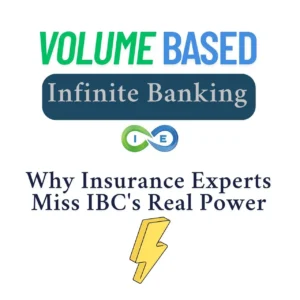We tend to think of settlement of a life insurance policy as when the insurance company pays out the policy’s death benefit upon the insured’s death. And that’s right as far as it goes. But that’s not the only way a life insurance policy can be “settled”.
Which is why…
We wanted to take a moment and discuss some other ways a life insurance policy can get “settled” particularly when you’re talking about a Whole Life Insurance policy vs a Term Life Insurance Policy.
But before you get started, we want to warn you of two things:
First…
We’re going to cover a lot of different topics really quickly in this article so that you can get a general idea about what some of your options may be depending on what “kind” of life insurance policy that you have and how long you owned it.
And second…
If you find yourself getting lost or a bit confused about anything that we’re talking about in this article, don’t let that discourage you! Just write down any questions that you may have and then give us a call. After all, that’s what we’re here for.
So, without further ado, let’s get on with:
Settlement Options Life Insurance
What you might call the “ordinary” way for life insurance to pay out is known as a “lump-sum settlement.”
With a lump sum death benefit, upon the insured’s death, the insurance company pays the policy’s entire death benefit to the named beneficiary in a single, large payment.
The beneficiary could be a family member, the insured’s estate, a trust, a business that relies on the insured, or an assignee of the original beneficiary. But the basic procedure is the same: the insured dies, the insurer pays the beneficiary, and the policy is effectively fulfilled.
Annuitize
Significantly, though, beneficiaries can opt to annuitize or defer payments—whether through an option built into the insurance policy or through a separate annuity contract entered into with the life insurance company.
Instead of the insurer paying out the death benefit in one lump-sum, payments are spread out over a period of years or for the rest of the beneficiary’s life.
A benefit of annuitization is that avoids the temptation to squander a big cash payment and ensures a long-term, reliable source of regular income to the beneficiary.
And, sometimes, insurance companies reduce premiums if a policyholder agrees in advance that the eventual death benefit will be paid out over time.
Because policy proceeds usually earn interest during an annuitization or deferral period, the aggregate amount ultimately received by the beneficiary ends up being greater than if proceeds are paid as a lump sum.
The face value of life insurance proceeds is not taxable income to a beneficiary, but any growth above the face value is taxed in the year during which it is actually received.
So, if a beneficiary receives annuitized payments in an aggregate amount of $110,000 from a policy with a $100,000 death benefit, the beneficiary will owe income tax on the $10,000 growth as it is received, but not on the $100,000 face value.
Within the broad category of “annuitized payments,” there are multiple more-specific payment structures to choose from, depending in part on the individual policy and company.
The “right” or “best” life insurance settlement option structure depends on each beneficiary’s unique circumstances, so it is usually a good idea to review your options with a financial adviser before committing.
6 Life Insurance Settlement Options
Life Income Settlement Option:
This is the option that looks the most like a traditional annuity.
The beneficiary receives regular payments at pre-set intervals and amounts, guaranteed for the rest of his or her life.
The precise payment amount is based on a variety of factors including the value of the death benefit, the age and life expectancy of the beneficiary, and the insurer’s anticipated investment return during the annuitization period.
A big advantage of life income payments is that the beneficiary is guaranteed a reliable income stream for life, regardless of how long (or short) that ends up being.
So, if you’re in good health, have a strong constitution, and anticipate outliving your life expectancy, you could end up receiving considerably more than the present value of the death benefit.
Of course, the opposite is true, too. If a life-income beneficiary dies early, no one else gets the rest of the policy proceeds.
Joint and Survivor Life Income Settlement Option:
The “joint and survivor” option functions like “life income” payments, except that the insurer guarantees payments for two lives—the beneficiary’s and his or her spouse’s.
Payments continue for the longer of the two, ensuring that a surviving spouse retains a source of stable income after the other spouse’s death.
The chance of either spouse outliving life expectancy is greater than the chance of one specific spouse doing so; thus, “joint and survivor” payments are usually moderately less than with “life income.”
Sometimes, the joint and survivor settlement option provides higher payments while both spouses are living and then reduces the amount paid to the surviving spouse.
Life Income with Period Certain Settlement Option:
This option offers a hedge against the risk of a life-income beneficiary dying early and receiving substantially less than the policy’s face value.
“Period certain” means that, notwithstanding the life-income structure, the insurer guarantees it will continue making payments for at least a defined period of years.
If the period certain is ten years and the beneficiary lives longer than ten years, he or she receives payments for life.
But, if the beneficiary dies after just five years, a secondary beneficiary (or the original beneficiary’s estate) receives the payments for the remaining five years of the guarantee period.
Everything else being equal, “life income with period certain” payments will be a little smaller than “life income” payments.
Fixed Period Settlement Option:
When a beneficiary selects a “fixed period” payout, the death benefit plus interest is paid out at regular intervals over a defined number of years (e.g., five years, ten years, etc.).
In the event the beneficiary passes away before the conclusion of the payment term, the insurance company pays the remaining amount to the beneficiary’s estate or to a designated successor beneficiary.
The remainder can be paid as a lump sum or by continuing the regular installments, depending upon the individual policy language.
Specific Income Settlement Option:
The “specific income” payment structure pays out in a fixed amount and on a regular schedule until policy proceeds are exhausted.
While the insurance company is holding the money, interest accrues, so the gross payment ends up exceeding the policy’s face value.
Interest rates can be fixed or variable, depending on the individual policy and insurer.
Interest Income Settlement Option:
Under the interest only settlement option, the insurance company holds and invests the policy’s death benefit, and the growth (but only growth) is paid out to the beneficiary. This can be a useful approach if you don’t need a large influx of cash now and want to save it for retirement or a large future expense.
When you’re ready for the money, you direct the insurer to issue the payment—or you can roll it over into another insurance policy or an annuity.
Or, you can assign the value to a secondary beneficiary to receive upon your death.
Now, for permanent policies, such as cash value whole life insurance, you have a couple more life insurance settlement options to consider.
2 Cash-Value Settlement Options
The above-described scenarios involve an insurance policy triggered by the death of the person whose life was insured.
However, a death-benefit payout is by no means the only way a permanent policy can be settled.
During the insured’s life, a policy can be surrendered for cash or used to acquire other valuable financial assets, such as an annuity, or other life insurance.
When a policy is settled, the insurer is relieved of the obligation to pay the original death benefit. The insurer may now be required to pay a death benefit on another policy or in another amount, but the original obligation is released.
Cash Surrender:
A straight cash-surrender settlement is the simplest way to settle a policy during an insured’s life. You are essentially directing the insurer to pay out the policy’s cash value now instead of paying the death benefit later. You get a check, and the policy is effectively concluded.
Alternatively, the cash from a cash-value surrender can be rolled over into an annuity or another life insurance policy through a 1035 Life Insurance Exchange, which avoids any current income tax liability that would otherwise have been due for the transfer.
With a 1035 Exchange, you are basically applying cash value as a large, lump-sum premium payment for a new annuity or policy.
Converting life insurance into an annuity is a popular approach for recent retirees who no longer have much need for life insurance but who could use a steady stream of supplemental income.
Reduced Paid-Up:
Nearly every whole life policy offers a “reduced paid-up (RPU) non-forfeiture option.”
When an RPU option is elected, you use accrued cash value as a lump-sum premium payment toward a pre-paid permanent policy with a lower death benefit than the current policy.
In return for the decreased death benefit, you avoid the need for any future premiums. The policy is “paid-up,” guaranteed for life, and there is no risk of future forfeiture.
Pre-Paid Term Life Insurance:
A similar option is to apply cash value as a lump-sum, upfront premium payment for a pre-paid term life insurance policy.
After application of the cash value, you won’t need to pay premiums for the term policy for as long as it stays in place.
Depending on your age, health, and the total premiums paid, this is sometimes a good deal.
However, you no longer have permanent life insurance, and if you outlive the new policy’s term, the beneficiary won’t receive any payout.
And there you have it!
Now remember, we told you in the beginning that we were going to cover a lot of information in a relatively short article so please don’t beat us up if you feel that we haven’t covered all of these topics in complete detail or you feel lost by all the information that we did provide.
All this article…
Is intended to do is provide one with a brief outline of some of the options that may be available to them and give them a place to start when trying to determine what is going to be the best option of them and their family.
So…
What are you waiting for? Give us a call here at I&E and see what we can do for you!






1 comment
Dan Doherty
Here, we would like to explain the most common settlement options for a life insurance policy. If you decide that you no longer need or cannot afford your life insurance plan, there are a few different options available to you. To learn more about life settlement Options visit Viatical.org